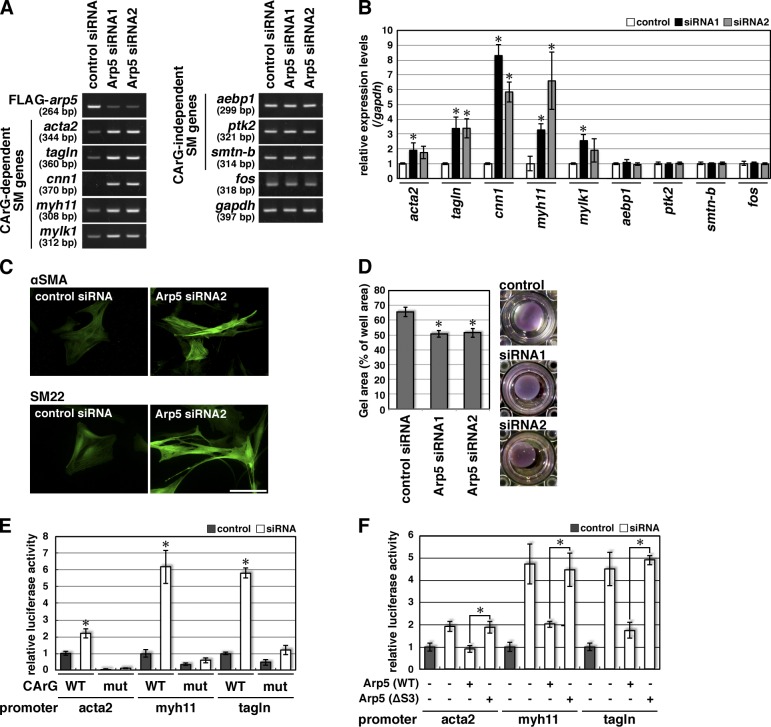Figure 8.
Knockdown of Arp5 restores smooth muscle phenotypes in dedifferentiated VSMCs. (A) Total RNA was extracted from VSMCs transfected with control or Arp5 siRNA for 4 d, and RT-PCR was performed with the indicated gene-specific primer pairs. (B) Smooth muscle genes’ expression levels in the control or Arp5-knockdown VSMCs were quantified by real-time RT-PCR. Data represent the mean ± SEM of three independent experiments. *, P < 0.05, Student’s t test. (C) Cultured VSMCs were transfected with control or Arp5 siRNA2 for 4 d, and immunostaining was performed with anti-αSMA (top) or anti-SM22 (bottom) antibodies. Bar, 100 µm. (D) VSMC contractility was determined by a collagen gel lattice contraction assay. VSMCs were transfected with control or Arp5 siRNA for 3 d and then seeded into collagen gels. The contractile response was initiated by stimulation with 100 µM carbachol. The well area was set as 100%. Data represent the mean ± SEM of three independent experiments. *, P < 0.05, Student’s t test. (E) A7r5 cells were transfected with control or Arp5 siRNA2 for 5 d, and the luciferase reporter assay was performed using the indicated promoter–reporter constructs, which contained wild-type (WT) or mutated (mut) CArG boxes. Data represent the mean ± SEM of four independent experiments. *, P < 0.05, Student’s t test. (F) Human Arp5 or Arp5-ΔS3 expression vector was transfected into A7r5 cells with the indicated promoter–reporter constructs. Subsequently, these cells were transfected for 5 d with control or Arp5 siRNA1, which was designed against endogenous rat Arp5 but not against human Arp5, and then the luciferase reporter assay was performed. Data represent the mean ± SEM of four independent experiments. *, P < 0.05, Student’s t test.

